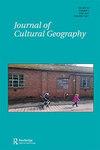超越本土:新英格兰啤酒营销的地点、人群和品牌
IF 0.7
Q3 GEOGRAPHY
引用次数: 14
摘要
摘要尽管几十年来一直被少数几家大公司占据主导地位,但美国啤酒市场上的微型酿酒厂却出现了戏剧性的复苏。与传统的寡头垄断市场理论相反,小公司一直从其根深蒂固的竞争对手那里获得市场份额。研究人员将这一成功归因于“新本土主义”。通过营销,微型酿酒厂吸引了消费者与真人和当地特色产品的联系。然而,并没有研究证实这种模式是否是微型酿酒厂的最典型特征。随着新公司威胁到其市场份额,大公司可能会采用新的本土主张,但很少有实证关注大型酿酒商,而中型区域性公司在很大程度上被研究人员忽视。本文通过对啤酒包装内容的分析,来考察其对消费者的吸引力。我发现,虽然微型酿酒厂确实提出了新的地方主张,但地区酿酒厂更有可能将其产品与当地规模的地方联系起来。大型啤酒厂很少做出这样的声明,而是依赖于“反射性品牌”:营销指的是品牌本身,而不是从人或地方借用现有的象征意义。这些发现在一定程度上支持了新本土的观点,但也挑战了我们对哪些公司使用新本土诉求最多的期望。本文章由计算机程序翻译,如有差异,请以英文原文为准。
Beyond the local: places, people, and brands in New England beer marketing
ABSTRACT Despite decades of domination by a few large companies, the American beer market has seen a dramatic resurgence of microbreweries. Contrary to conventional oligopolistic market theories, small firms have consistently gained market share from their entrenched competitors. Researchers have attributed this success to “neolocalism.” Through their marketing, microbreweries appeal to consumers’ desire for connections to real people and distinctive products from local places. However, no study has verified whether this pattern is most characteristic of microbreweries. With newer firms threatening their market share, larger firms might adopt neolocal claims, but little empirical attention has been directed at large brewers, and mid-sized, regional firms have been largely ignored by researchers. This paper uses content analysis of beer packaging to investigate the nature of the appeals made to consumers. I find that while microbreweries do make neolocal claims, regional breweries are more likely to associate their products with places on a local scale. Large breweries make few such claims, but instead rely on “reflexive branding”: marketing that refers back to the brand itself rather than borrowing existing symbolism from people or places. These findings partly support the neolocal perspective, but also challenge our expectations of which firms use neolocal appeals the most.
求助全文
通过发布文献求助,成功后即可免费获取论文全文。
去求助
来源期刊

Journal of Cultural Geography
GEOGRAPHY-
CiteScore
1.70
自引率
22.20%
发文量
15
期刊介绍:
Since 1979 this lively journal has provided an international forum for scholarly research devoted to the spatial aspects of human groups, their activities, associated landscapes, and other cultural phenomena. The journal features high quality articles that are written in an accessible style. With a suite of full-length research articles, interpretive essays, special thematic issues devoted to major topics of interest, and book reviews, the Journal of Cultural Geography remains an indispensable resource both within and beyond the academic community. The journal"s audience includes the well-read general public and specialists from geography, ethnic studies, history, historic preservation.
 求助内容:
求助内容: 应助结果提醒方式:
应助结果提醒方式:


